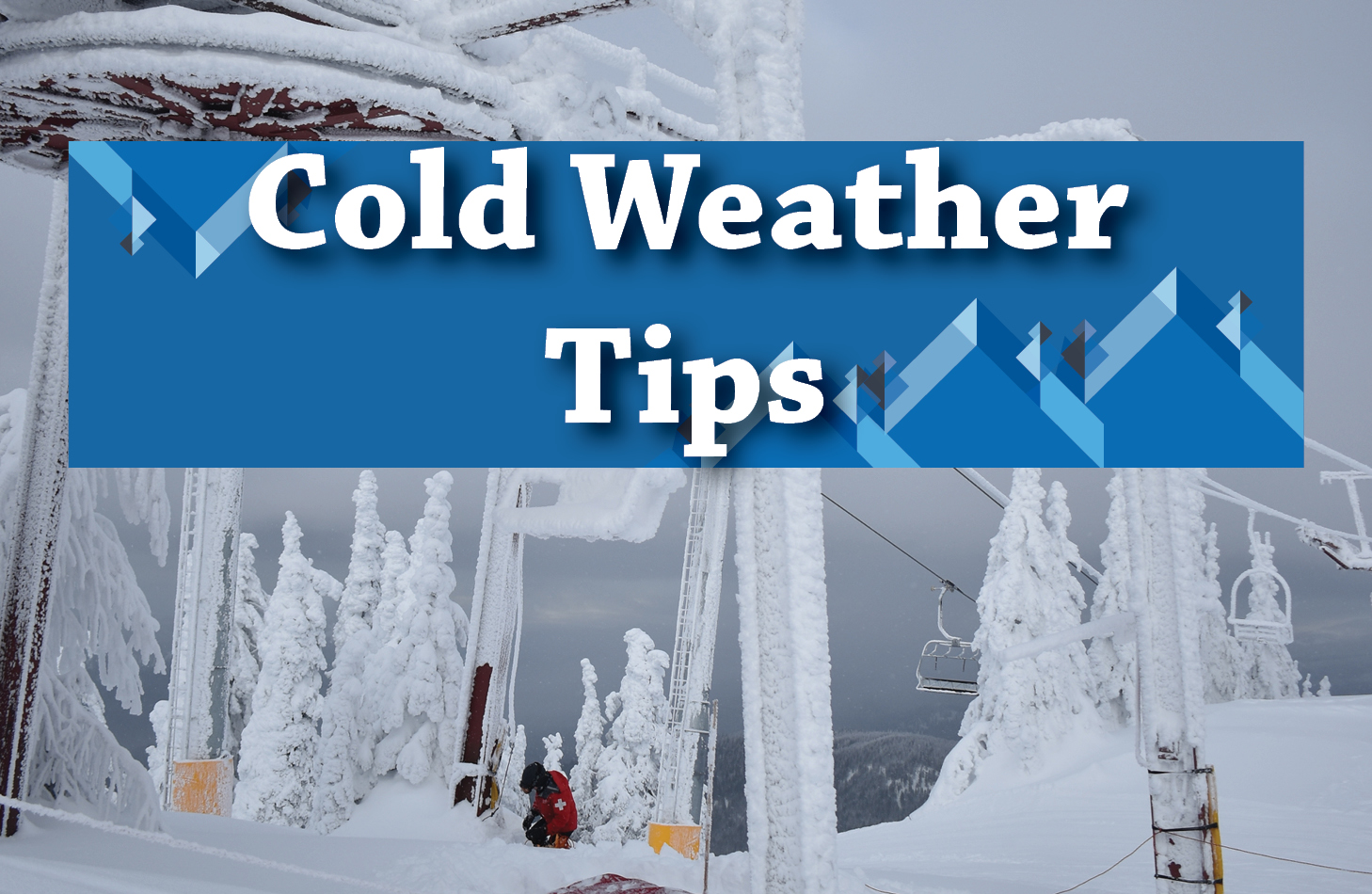51°F


Cold Temps = Great Turns!
Cold weather actually makes for some incredible conditions on the slopes. From the chalky groomers offering up amazing grip to arc some carved turns, to the light, dry powder that evokes terms like “Cold Smoke” or “Blower Pow,” there’s a variety of serious fun to be had on the mountain. The key to making those frigid days from magnificent lies in the preparation and the gear we choose, especially the clothing! If you need any help selecting the right gear, make sure to stop by our expanded Alpine Shop. Our experts can help you with everything from socks to outerwear, and handwarmers to facemasks.
Here are a few tips to make the most out of those really chilly days.
Layer, Layer, LAYER!
Most of us know that exposed skin on those ice-cold days is a no-go, along with the benefits of adding layers. However, just layering isn’t enough, layering smarter is much more effective than simply piling on more and more layers! Here’s a rundown on how to ensure that your layers will perform for you.
Base Layer – Your base layer’s main job is to keep moisture away from your skin. Synthetic materials and Merino Wool make the best base layers, keeping your skin nice and dry. Body heat is lost significantly faster when your skin is wet. Wool is one of the few natural fibers that can absorb and hold moisture while still keeping you warm. Fibers like cotton should be avoided, as they hold moisture against the skin and lose insulating value when wet, making you colder faster…
Mid Layer – Your mid-layer should serve to trap air, in turn holding the heat your body produces! Synthetic insulations like Primaloft or fleece and natural insulations like down are incredibly good at trapping warm air. The synthetic materials maintain most of their insulating properties if damp. Make sure you keep your down dry though, as performance decreases quickly when it gets wet.
Outer Layer – An outer layer has one main job: protect you from the elements! Your outer layer should be a tough ski/snowboard jacket that can handle whatever conditions you’re looking to take on! In the Northwest, that can mean just about any kind of weather. Waterproofing and breathability are two big factors that separate good outerwear from great outerwear. A high level of waterproofing (15,000-20,000mm/sq. in. and up) will keep you dry from the outside elements while a high level of breathability (12,000-20,000g/m2 and up) allows moisture vapor to escape from within so that you stay dry on the inside. Keeping the cold air and wind out is another key feature. Sealed zippers, storm flaps, wrist and waist gaiters all help to keep the cold and snow from sneaking in.
EAT!
Go ahead and have that extra fry, it’s important to have calories to burn when you’re out in the elements. Whether it’s a big breakfast before a morning on the mountain or a stop in the Quickturn Café for a mid-ski lunch, make sure you’re providing your body with food to burn for a day full of energy.
Hydrate!
We can get dehydrated quickly in the cold, especially when we’re active. Just breathing releases a lot of our water resources into the air. We not only get tired faster and experience things like soreness and muscle cramps more easily when we get dehydrated, but we also are way less efficient in maintaining warmth. Make sure to drink plenty of water throughout the day when you’re up on the mountain.
Overall, just stay warm.
‘Stay warm’ sounds obvious, but it’s the most important thing you can do for your health! Being unprepared in the cold can lead to injuries, a weakened immune system, and overall, a bad time on the mountain. So ski or ride hard, stay warm, and enjoy this beautiful winter season.
